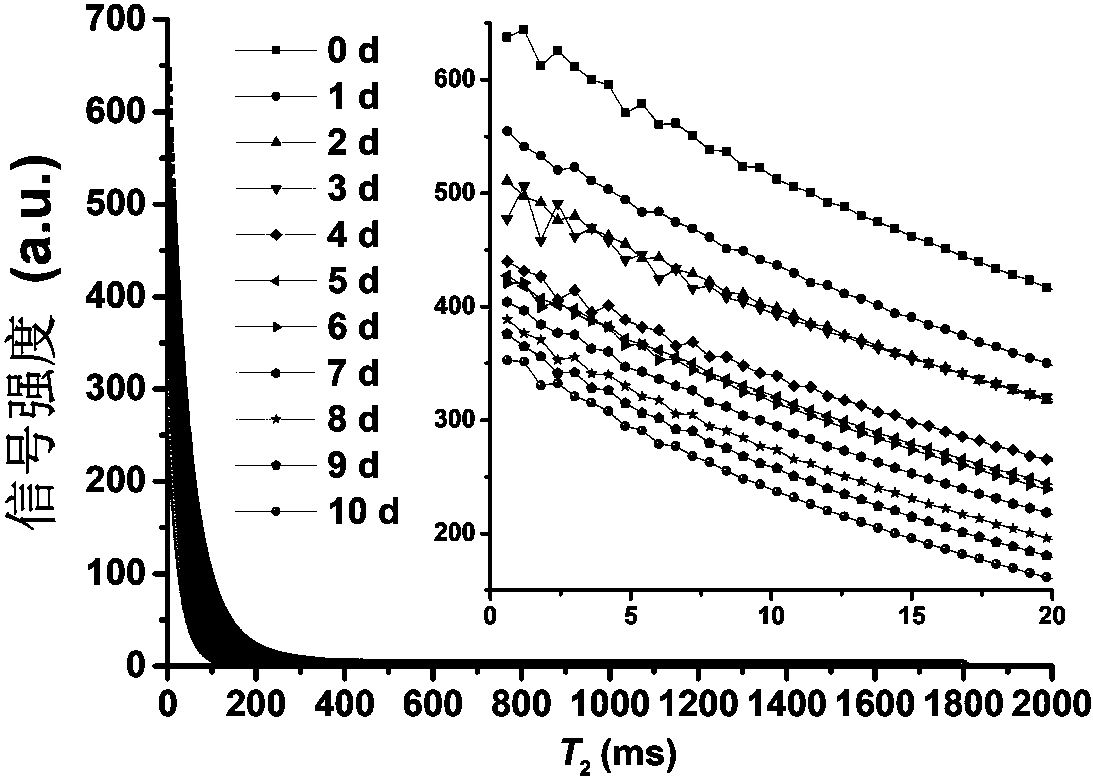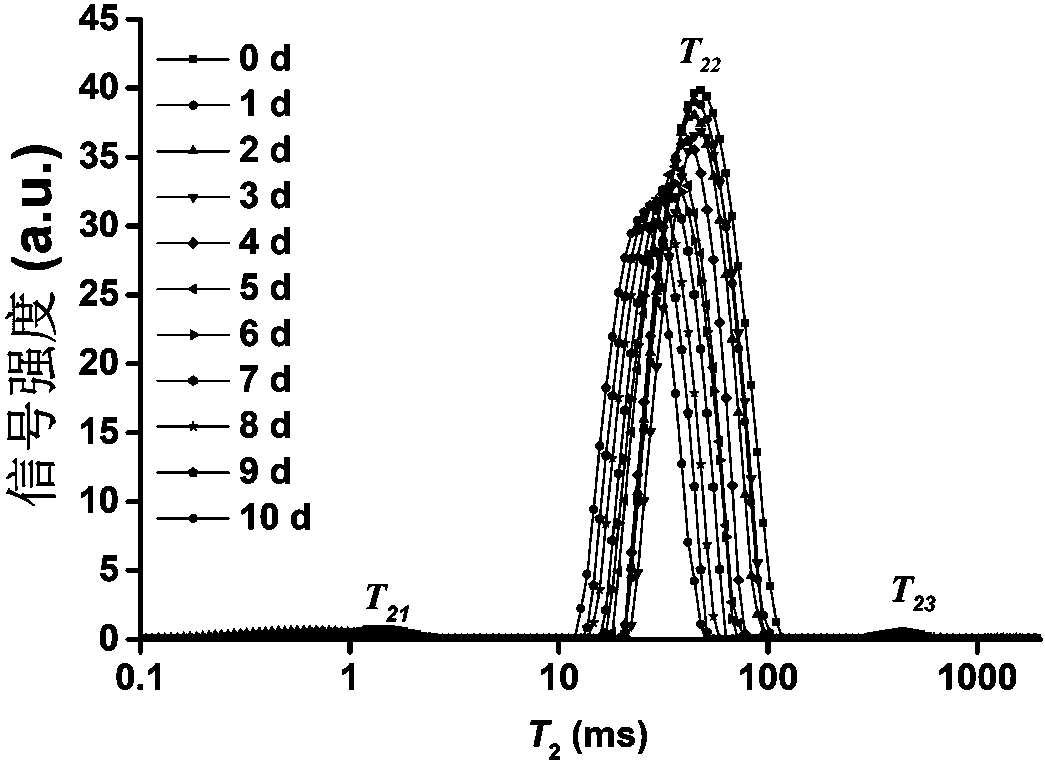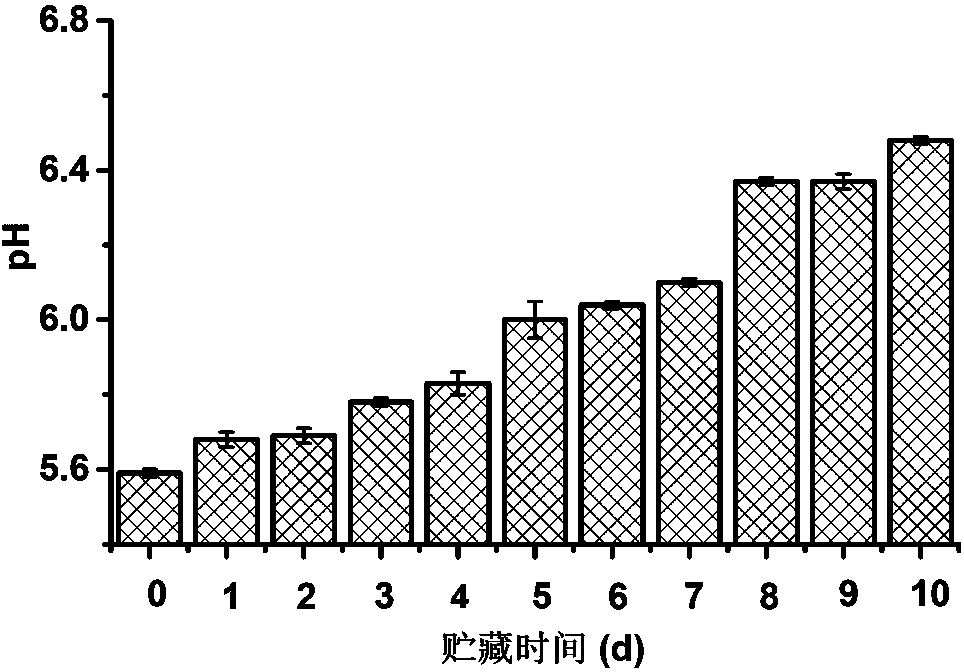Low field nuclear magnetic resonance-applied frozen beef freshness nondestructive testing method
A low-field nuclear magnetic resonance and non-destructive testing technology, applied in the direction of analysis using nuclear magnetic resonance, can solve the problems of being easily affected by subjective thoughts and the environment, quality degradation, time-consuming and destructive, etc., to meet the needs of rapid analysis and operation. Simple process and the effect of improving measurement efficiency
- Summary
- Abstract
- Description
- Claims
- Application Information
AI Technical Summary
Problems solved by technology
Method used
Image
Examples
Embodiment Construction
[0027] The present invention utilizes the refrigerated beef freshness non-destructive detection method of low-field nuclear magnetic resonance technology, concrete implementation steps are as follows: A, sample collection, get the bovine semimembranous muscle part on the same head of cattle and divide, remove all visible fat and fat from beef After the connective tissue, the muscles were cut into 3 × 2 × 1.5 cm pieces (3.0 cm thick slices perpendicular to the fiber direction, with a 2 cm × 1.5 cm cross-section), weighing 10 ± 1 g. Take 10 pieces of bovine semimembranous muscle for each storage test, and a total of 110 pieces are used; B. Sample low-field nuclear magnetic analysis, using MesoMR23-060H-I magnetic resonance imaging analyzer to perform low-field nuclear magnetic analysis on 110 samples, using CPMG pulse sequence , Measuring beef transverse relaxation time T2, parameter setting: 90 degrees, pulse width P1: 13 μs, 180 degrees pulse width P2: 26 μs, repeated sampling ...
PUM
 Login to View More
Login to View More Abstract
Description
Claims
Application Information
 Login to View More
Login to View More - R&D
- Intellectual Property
- Life Sciences
- Materials
- Tech Scout
- Unparalleled Data Quality
- Higher Quality Content
- 60% Fewer Hallucinations
Browse by: Latest US Patents, China's latest patents, Technical Efficacy Thesaurus, Application Domain, Technology Topic, Popular Technical Reports.
© 2025 PatSnap. All rights reserved.Legal|Privacy policy|Modern Slavery Act Transparency Statement|Sitemap|About US| Contact US: help@patsnap.com



